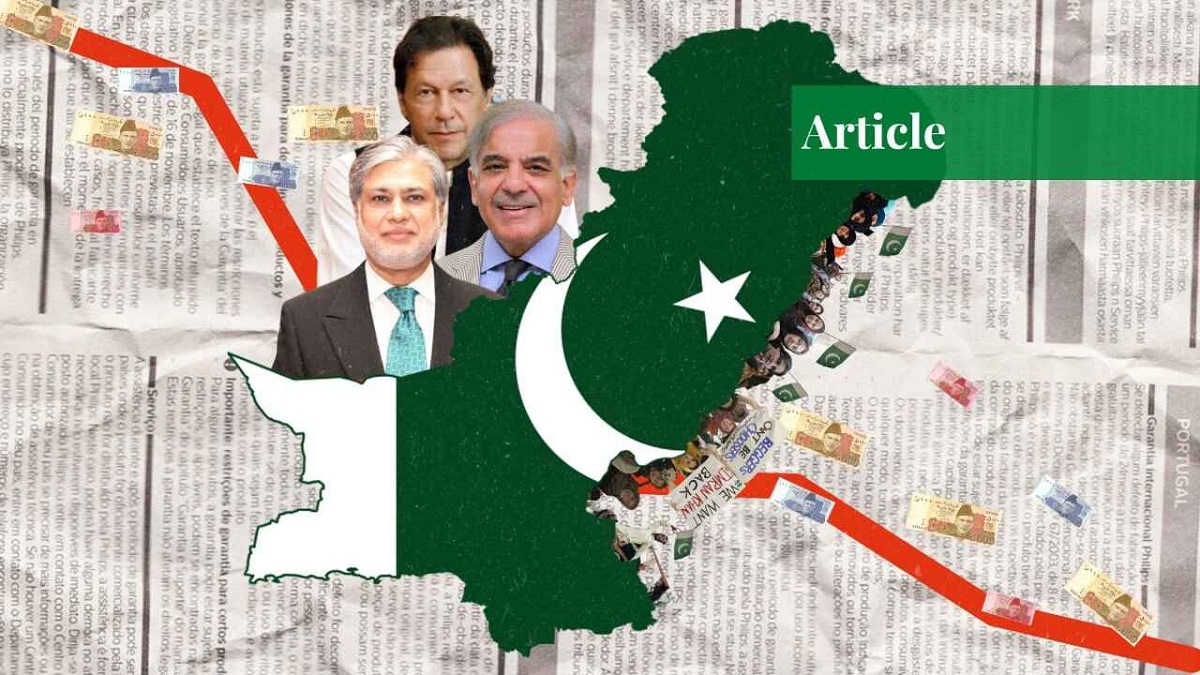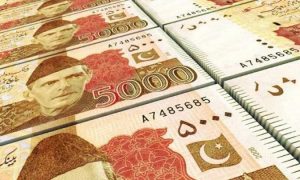In the face of strict import limitations aimed at preventing a sovereign default, Pakistan’s economic growth rate plummeted to a paltry 0.3% in the outgoing fiscal year. This decline left the industrial sector incapacitated and subsequently impacted the services sector.
The marginal 0.29% increase in national output is the least observed in the last four years, revealing the glaring economic mismanagement incapable of catering to the needs of the country’s 250 million inhabitants.
Despite the dire floods, the agricultural sector surprisingly witnessed a 1.6% expansion, surpassing all contraction forecasts arising from the crippling impact on crops. Conversely, the industrial sector shrunk by 2.94%. The services sector, the most significant component of the economy, demonstrated a nominal growth of 0.9%.
The government’s economic mismanagement resulted in missing all sectoral objectives, causing considerable layoffs and contributing to an unprecedented 59-year-high inflation rate of 36.4%.
In a controversial decision on Wednesday, the National Accounts Committee (NAC) approved the provisional Gross Domestic Product (GDP) growth rate for fiscal year 2022-23, ending on June 30. The planning secretary, Zafar Ali Shah, chaired the meeting.
The outgoing fiscal year will be marked in Pakistan’s history for its devastating floods, severe economic mismanagement, and a dramatic decline in purchasing power due to record inflation.
A drastic devaluation of the rupee and a hike in utility prices in the hopes of securing a deal from the International Monetary Fund (IMF) led the government to incur heavy losses on the economy. However, neither could the IMF programme be revived, nor could the economy be saved from disaster.
The NAC meeting was postponed four times in a week due to disagreements over the increase in national output, according to sources. Several Pakistan Bureau of Statistics officials were engaged in negotiations to reach a consensus.
Although growth has receded, the overall economy is not in recession, clarified Dr Nadeem Javaid, Chief Economist of the Planning Commission. He attributed the slump in economic output primarily to the government’s mismanagement and the detrimental impact of the floods.
Read More: Influential Industrialists Seek to Resolve Political Impasse for Economic Stability
The nearly 0.3% growth rate fell significantly short of the official 5% target. However, it was consistent with the forecasts of the Ministry of Finance, the State Bank of Pakistan, the International Monetary Fund, the World Bank, and the Asian Development Bank, which all predicted an economic growth rate between 0.2% and 0.8%.
The last fiscal year of PTI rule recorded a 6% growth rate, revised by the NAC on Wednesday to 6.1%.
Respected economist Dr Hafiz Pasha projected that the economy contracted by more than 3% during the outgoing fiscal year. The extensive restrictions on imports and consumption caused a substantial reduction in the economic growth rate, leading to a severe external sector crisis, a pattern eerily reminiscent of the 2018 economic downturn.
Between 2017-2018 and 2021-2022, Pakistan’s growth relied heavily on foreign savings, an unsustainable model. In contrast to the official target of 3.9% growth, the agriculture sector is estimated to have grown by 1.6%, a surprising figure which could result from incorporating around Rs500 billion flood expenses.
The State Bank of Pakistan increased interest rates to a record 21% in an attempt to curb inflation. However, the central bank failed to contain inflation, which has already reached 36.4%.
Against a growth target of 4% for the services sector, the provisional figures indicate a meager growth rate of 0.9%. The NAC also revised the GDP growth rate for the penultimate year of PTI governance from 6% to 6.1%, establishing the final growth rate of GDP for 2020-21 at 5.8%.



























